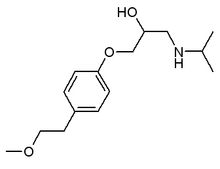The use of beta-adrenergic blocking agents in the treatment of heart failure and left ventricular dysfunction has provided a significant improvement in survival and reduced the need for hospitalization for worsening heart failure. Multiple studies have shown that the use of various beta-adrenergic blocking agents may provide a reduction of approximately 35 percent in mortality. All of these studies have initiated treatment with a low-dose beta blocker, with titration to the maximum dose or to the highest dose tolerated. Some patients are unable to tolerate maximum doses of beta-adrenergic blockers, and they may not reach the goal of maximum dose. This factor raises the question of whether patients who cannot tolerate the maximum dose need to reach this goal to have the best outcome during beta-adrenergic blockade therapy. Wikstrand and colleagues studied the effect of low-dose beta-adrenergic blockade therapy on outcomes in patients with heart failure.
The study population was a subgroup of the Metoprolol Controlled-Release/Extended-Release (CR/XL) Randomized Intervention Trial in Chronic Heart Failure (MERIT-HF) study. Patients in the study had symptomatic heart failure in New York Heart Association (NYHA) Class II to IV, ejection fraction of 40 percent or less, and were taking optimal diuretic therapy and an angiotensin-converting enzyme inhibitor. After a two-week placebo phase, participants were randomly assigned to start metoprolol CR/XL at 12.5 mg or 25 mg per day, or placebo. Patients in the metoprolol-treated group had their dose doubled every two weeks to a maximum of 200 mg once daily or the highest tolerated dose. Primary outcome measures included total mortality, all-cause hospitalizations, sudden death, death from worsening heart failure, cardiac deaths, hospitalizations from worsening heart failure, and nonfatal acute myocardial infarctions. The study group was divided into two subgroups of patients who were able to titrate their metoprolol to more than 100 mg per day (i.e., high dose) and patients who were unable to tolerate the maximum dose and were taking 100 mg or less per day (i.e., low dose).
The low-dose group actually had a somewhat higher risk compared with the high-dose group. Heart rate reduction was the same in the two groups, indicating a higher sensitivity to beta-adrenergic blocking agents in the low-dose group. Reduction of total mortality and all other outcome measures was similar in the low- and high-dose groups (see accompanying table).
The authors conclude that risk reduction was similar between the low- and high-dose metoprolol groups in the treatment of heart failure. They note that this may be a result of patients' sensitivity to beta-adrenergic blocking. They add that an individualized dose-titration regimen for metoprolol can be guided by patients' ability to tolerate the medication and their heart rate response.
COPYRIGHT 2003 American Academy of Family Physicians
COPYRIGHT 2003 Gale Group



